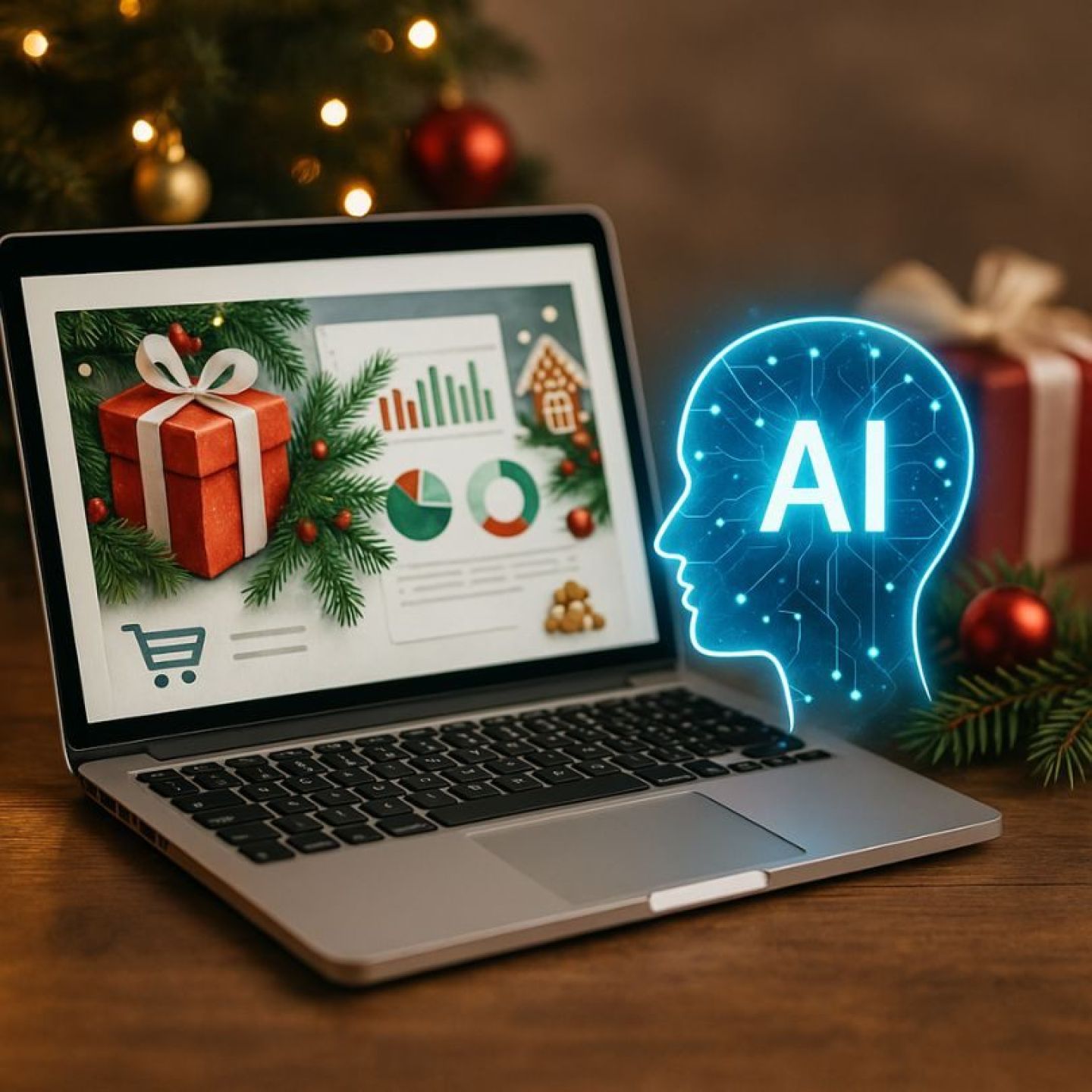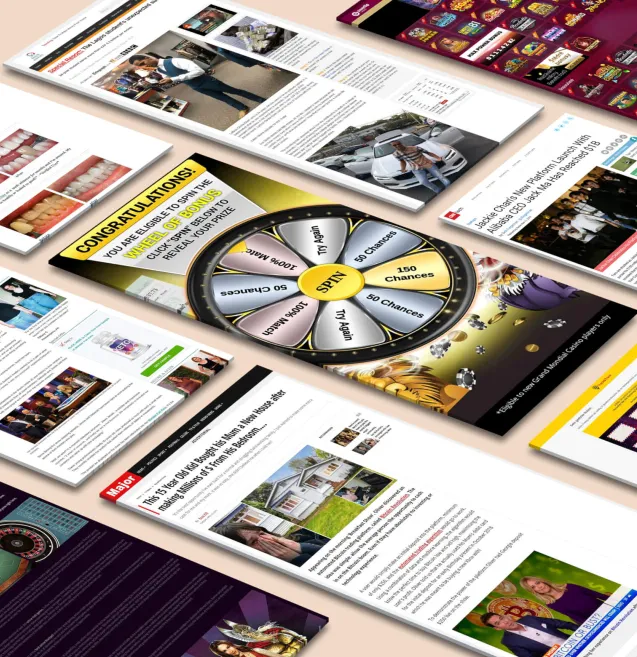
Our spy tools monitor millions of push notification ads from over 90+ countries and thousands of publishers.
Get StartedThe holiday shopping season isn't what it used to be. You can't just focus on Black Friday and Cyber Monday anymore—consumer spending patterns have shifted dramatically, with December now hosting multiple high-spending days that demand your attention. This evolution requires a fundamentally different approach to holiday marketing optimization, one where AI-powered tools become your competitive advantage rather than a nice-to-have feature.
I've watched countless marketers struggle with Q4 marketing strategies that rely on outdated playbooks. The brands that win during the holidays are the ones leveraging AI-powered holiday campaigns to anticipate consumer behavior, personalize content at scale, and make data-driven decisions in real-time. You need to move beyond gut feelings and embrace the precision that artificial intelligence brings to campaign management.
In this article, we'll explore AI marketing strategies for Q4 that help you fine-tune your holiday campaigns for maximum impact before December hits. You'll discover actionable tactics for optimizing everything from bidding strategies to creative assets, ensuring your campaigns deliver results when it matters most.
The traditional holiday shopping calendar has undergone a dramatic transformation. Black Friday and Cyber Monday no longer dominate the holiday season trends as they once did. Consumer spending patterns now reveal that December holds multiple high-spending days that rival—and sometimes surpass—these traditional shopping events.
The extended holiday shopping period has fundamentally altered how you need to approach campaign planning. Instead of concentrating your marketing firepower on two major days, you're now managing sustained campaigns across several weeks. This shift means your budget allocation, creative assets, and targeting strategies must maintain momentum throughout the entire month.
Retail marketers face a new reality: consumer spending patterns have become less predictable and more distributed. Shoppers no longer wait for specific sale days. They browse, compare, and purchase throughout December, responding to various triggers—from payday schedules to last-minute gift needs.
This evolution demands a different strategic approach. You can't simply front-load your budget and hope for the best. The extended holiday shopping window requires:
The complexity of managing these extended campaigns makes AI-powered optimization not just helpful, but essential for staying competitive during the holiday rush.
AI consumer insights have transformed how businesses understand and respond to customer behavior during the holiday rush. Traditional analytics tools often deliver data days or weeks after the fact, but AI-powered platforms process information in real-time, giving businesses the ability to spot emerging trends as they happen.
With AI, businesses can now access category-level insights that reveal:
These real-time data analysis capabilities let businesses identify micro-moments when specific customer segments are most likely to purchase.
New customer acquisition becomes significantly more effective when businesses leverage AI to analyze behavioral patterns across millions of data points. The technology identifies characteristics of high-intent shoppers who haven't purchased from the business before, allowing them to create specialized campaign goals that speak directly to their needs and preferences.
Peak period targeting requires precision that manual campaign management simply can't deliver at scale. AI tools continuously monitor performance metrics and automatically adjust targeting parameters to capture demand surges. When a particular product category experiences unexpected interest, the system recognizes this shift and reallocates resources to capitalize on the opportunity.
Businesses will find that AI-generated recommendations provide actionable next steps rather than just raw data. The platforms translate complex consumer behavior patterns into specific tactics that can be implemented immediately, whether that's adjusting bid strategies for certain keywords or expanding audience parameters to capture similar customer profiles.
Revenue numbers look impressive on paper, but they don't tell the complete story of your campaign's success. The real measure of AI holiday campaign optimization lies in profit maximization—understanding what you actually keep after accounting for costs, margins, and operational expenses.
Traditional holiday campaigns often chase top-line revenue metrics, leading you to spend heavily on customer acquisition without considering the profitability of each conversion. On the other hand, AI-powered profit optimization changes this approach by analyzing the complete financial picture of your campaigns.
These tools evaluate various aspects of your business to determine which conversions truly drive business growth:
The revenue vs. profitability distinction becomes critical during peak shopping periods. You might generate $100,000 in sales from a campaign, but if your profit margin is only 5% after accounting for advertising spend and fulfillment costs, you've only netted $5,000.
AI algorithms identify these scenarios in real-time, automatically adjusting bids and budget allocation to prioritize high-margin products and profitable customer segments.
Smart bidding strategies powered by AI continuously optimize for profit targets rather than simple conversion volume. The system learns which products, audiences, and times of day generate the best margins, then shifts resources accordingly.
This approach to Fine-Tuning Your Holiday Campaigns: AI-Powered Optimization Before December Hits can increase profitability by 15-30% compared to revenue-focused strategies, ensuring your holiday success translates to actual business value.
Your holiday ads need to stand out in an increasingly crowded marketplace, and AI-generated content makes this achievable at scale. Google's Product Studio transforms how you create visual assets by generating customized videos and images tailored to your product catalog. You can produce multiple variations of product imagery with different backgrounds, lighting, and styling—all without expensive photo shoots or lengthy production timelines.
The real power emerges when you pair these visual enhancements with dynamic ad creatives that adapt in real-time. AI continuously optimizes your ad headlines and descriptions based on what's actually driving engagement. When search trends shift from "best gifts for mom" to "last-minute holiday deals," your ads automatically adjust their messaging to match user intent. This responsiveness keeps your campaigns relevant during the rapid fluctuations typical of holiday shopping behavior.
Automated campaign optimization 2025 extends beyond creative elements to your targeting parameters. AI-driven controls let you expand your reach into new audience segments while maintaining the precision targeting that drives conversions. You're not choosing between scale and accuracy anymore—you get both. The system identifies patterns in high-performing audiences and automatically finds similar users who are likely to convert.
This approach to holiday ad performance improvement means your campaigns work smarter, not just harder. You're serving the right creative to the right person at the right moment, with minimal manual intervention required from your team. For instance, leveraging push notification advertising can uncover profitable push ads that dominate the market by spying on the most successful advertisers and marketers.
The bridge between digital campaigns and physical retail locations becomes critical during the holiday rush. Local inventory sync transforms how you connect online shoppers with nearby store availability, eliminating the frustration of discovering out-of-stock items after making the trip.
AI-powered systems automatically update your online campaigns with real-time inventory data from each physical location. When a customer searches for a specific product, your ads can display which nearby stores have it in stock, along with quantities and pickup options. This immediate visibility drives qualified foot traffic to your stores during peak shopping days.
The in-store sales conversion potential multiplies when you combine location-based targeting with inventory transparency. You can prioritize ad spend toward customers within a specific radius of stores carrying high-demand items. AI analyzes patterns in local search behavior and adjusts your campaigns to highlight products with strong in-store availability, reducing wasted ad spend on items that would require shipping delays or aren't available nearby.
This synchronized approach captures the "buy now" mentality that defines holiday shopping, converting digital interest into immediate physical store visits.
Acquiring new customers costs significantly more than retaining existing ones, making loyalty promotions a critical component of your holiday strategy. AI-powered insights allow you to identify your most valuable customers based on lifetime value, purchase frequency, and engagement patterns. You can then deploy targeted promotions specifically designed to keep these high-value shoppers coming back throughout the season.
An AI-tailored bidding strategy takes retention efforts to the next level by automatically adjusting bids based on customer segments. When a previous purchaser searches for products in your category, AI can increase your bid to ensure your ad appears prominently. The system learns which customers are most likely to convert again and allocates budget accordingly, preventing you from overspending on low-probability conversions.
The real power emerges when you coordinate your search ads with performance campaigns using unified AI insights. This approach creates a seamless customer journey:
You'll notice that customers exposed to both campaign types convert at higher rates than those seeing only one. AI continuously analyzes this cross-channel performance, redistributing budget between search and performance campaigns based on real-time effectiveness. This synchronized approach ensures you're not just maximizing individual campaign performance but optimizing your entire marketing ecosystem for the best possible return.
To further enhance your holiday strategy, consider implementing some of these 10 Holiday Strategies for AI and LLM Search which can help capture shoppers and boost visibility in AI and LLM search.
The holiday shopping season brings unpredictable consumer behavior patterns that can catch you off guard. Real-time recommendations powered by AI give you the agility to respond immediately when demand unexpectedly spikes for specific products or categories.
You can leverage AI insights to:
When a particular product category starts trending on social media or gains traction through viral content, AI-powered systems detect these shifts before they appear in your standard analytics dashboards. You're able to increase ad spend, adjust pricing to maximize profit margins, and ensure inventory availability—all while your competitors are still analyzing yesterday's data.
The speed at which AI processes market signals means you're not just reacting to changes; you're capitalizing on them while the opportunity window remains open.
The holiday season demands more than traditional marketing approaches—it requires intelligent, data-driven strategies that adapt in real-time. Fine-tuning holiday campaigns with AI-powered optimization before December hits gives you the competitive edge needed to capture consumer attention during the most critical shopping period of the year.
You've explored how AI tools for holiday marketing transform everything from consumer insights and profit optimization to creative enhancements and dynamic pricing. These technologies don't just automate processes—they empower you to make smarter decisions faster, reaching the right customers with personalized messaging at precisely the right moment.
The retailers who thrive this holiday season will be those who embrace these AI-powered strategies now, not after the shopping frenzy begins. Start implementing these optimization techniques today. Test your AI-driven campaigns, refine your targeting parameters, and establish your automated controls. Your preparation in the weeks ahead will directly impact your results when consumers are ready to spend.
The question isn't whether to use AI for your holiday campaigns—it's how quickly you can deploy these powerful tools to maximize your marketing impact.
Receive top converting landing pages in your inbox every week from us.
Must Read
This blog uncovers how AI can transform holiday marketing campaigns into high-performing, data-driven successes. It explains how AI tools help optimize targeting, personalize messaging, and predict consumer behavior for better engagement. Readers will learn practical ways to fine-tune their campaigns and boost conversions during the busy holiday season. Ideal for marketers looking to maximize results and efficiency with AI-powered strategies.
Marcus Chen
7 minNov 21, 2025
Tips & Tricks
This blog explores how combining push notifications with email marketing can create a seamless customer journey that drives higher conversions. It explains how these two channels complement each other — with push delivering instant engagement and email nurturing long-term relationships. Readers will learn actionable tips on timing, personalization, and automation to build a consistent conversion strategy. Perfect for marketers seeking to improve retention and maximize ROI across platforms.
Liam O’Connor
7 minNov 15, 2025
Must Read
Push notifications have become one of the most direct and effective tools for customer retention marketing. These short messages with images or videos go straight to your customers' devices, creating immediate opportunities to remind them about your brand. Unlike emails that often go unopened in busy inboxes, push notifications grab attention with an average open rate of 90% compared to email's 20%.
David Kim
7 minNov 9, 2025




